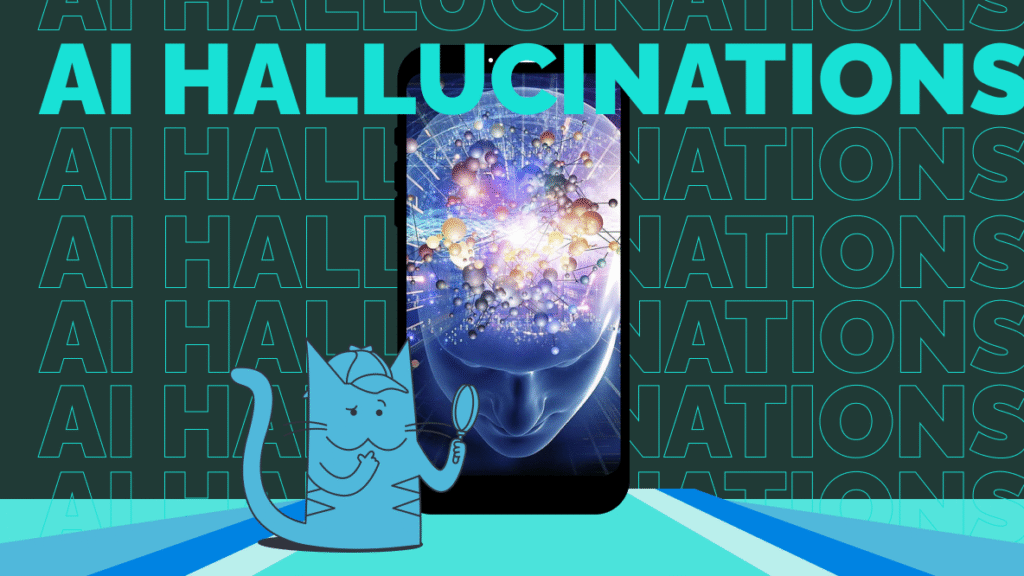Generative AI and, to be specific, large language models have made our lives easy, from simple tasks to generating an article or content using specific prompts to solving complex math problems to writing code. It makes every task accessible as long as you know how to explain your problem. However, sometimes, people encounter false, misleading, or nonsensical information being given by AI models. This is called AI hallucinations.

For instance, in the healthcare sector, AI can hallucinate by making up a non-existent condition or suggesting a wrong treatment plan. In such a situation, without expert oversight, AI can be detrimental to one’s health and can lead to inappropriate patient care. Highlighting the risk of over-relying on AI outputs.
Table of Contents
How it Occurs
Over the past several years, AI has made progressive strides in the development of humankind and technology. However, issues have also been witnessed along with technological development. Such issues include AI hallucinations. AI models are trained on data to make predictions and answer various queries. Such predictions are dependent on the precision and quality of data used to train the AI model.
If the data used to train the model itself is full of biases, misinformation, and fabrication. AI models will make mistakes and false claims when encountering user inputs.
Types of Potential AI Hallucination

AI hallucination is not limited to only false information but extends into biased, fictional, and nonsensical outputs generated by the model that deviate from reality and ingrains personal biases into the answers generated by it. Following this, one can divide AI hallucinations into three types:
- Wrong Factual Information: In this, AI generates factually incorrect information related to the historical underpinnings of mathematical problems. In some cases, it is noticed that AI struggled to logically interpret its two consistent, interlinked answers to the user’s question.
- Fictional Dilemma: When an AI model lacks clarity on a specific topic or lacks information, it tends to fabricate the whole or part of the output to support its statement, imposing a blanket of false trust in the eyes of individuals. This is due to a lack of training and grounding of the AI model.
- Senseless Output: Sometimes, AI models do generate flawless outputs using the prompts provided by the user. But lacks coherence and overall logical understanding of the topic making the information doubtful in the eyes of researchers.
Read More: What are the main design changes in iOS 26 Public Beta’s Liquid Glass aesthetic
Causes Leading to Such Errors
Though we know the basic idea behind why AI models fail to meet the expectations of users and give fabricated content, making them pay a huge cost of using technology. Some of the causes can be characterized as:
- Informational Inaccuracies: While training, if developers train AI models with inaccurate or even false data, then how can one expect a correct answer from the chatbot?
- Data not available: Information is incorrect in one case, but when the data itself is not available, then the AI constructs fictional stories to prove its points using whatever small pile of data it holds.
- Personal Biases: Grok AI was in the news for the blatantly biased outputs it generated for the people. Why not? When the developer instills biased information related to some topics and issues, the AI model will follow and reply accordingly.
Implications for the Users and Developers

The implications of using AI models range from wrong informational predictions to falsifying already correct information. Not getting it right? Let me explain with some examples.
- Wrongful predictions: When an AI model predicts the event that you know for sure is not going to happen. For instance, weather forecasts.
- False information: AI models may label genuine information to be false and misleading while failing to identify a potential threat. For instance, AI models are failing to identify spam websites.
Read More: R1 Robot: China’s Bold Rival to Tesla’s Optimus
How to Prevent Hallucinations
There are many suggestions to prevent AI hallucinations from occurring. Applied from the development stage, training, to post-development.
- Model Architecture: This plays a crucial role in understanding complex topics and deep rooted information. When the model itself lacks the ability and depth to understand nuances, context then it generates overly simplified and generic outputs.
- Quality of data: There’s no doubt, the quality of data is more important than the quantity of data. The whole point is to train your AI model on highly relevant, correct, and in-depth data to prevent any instance of AI hallucination from occurring in the future.
- Regularization: Regularization is a technique to penalize AI models for making extreme predictions. Therefore, it limits the extent of making wrongful predictions.
- Specific template: Providing a specific template to answer a range of topics or issues can help a lot. It can help model structure the data while generating an output, minimizing the possibility of mistakes.
- Feedback: There’s a popular saying that failures are the best learning lessons for humans. As a developer, you should actively give feedback to your model so that it will not repeat the same mistake over and over again.
Read More: Google Gemini vs ChatGPT: The Next-Gen AI Model Battle
Data Point Reflecting instances of AI Hallucinations

According to a Tidio Study, 86% of internet users personally experienced instances of AI hallucinations, while 46% claim they often encounter such issues.
Vectara’s Hallucination Leaderboard showed that even advanced AI models hallucinate, indicating GPT-4 Turbo has a 2.5% error rate.
Recent Developments in AI Hallucinations
Reports suggest AI hallucination is on decline as models become large and sophisticated, using high-value data points and training methods. Another factor can be the entry of biggies in the domain of AI and developing far more advanced models with minimal chances of errors. Projections, therefore, suggest AI hallucinations will reach low levels by 2027.

